Pininfarina Battista Next In Potentially Long Line of Rimac Nevera Variants
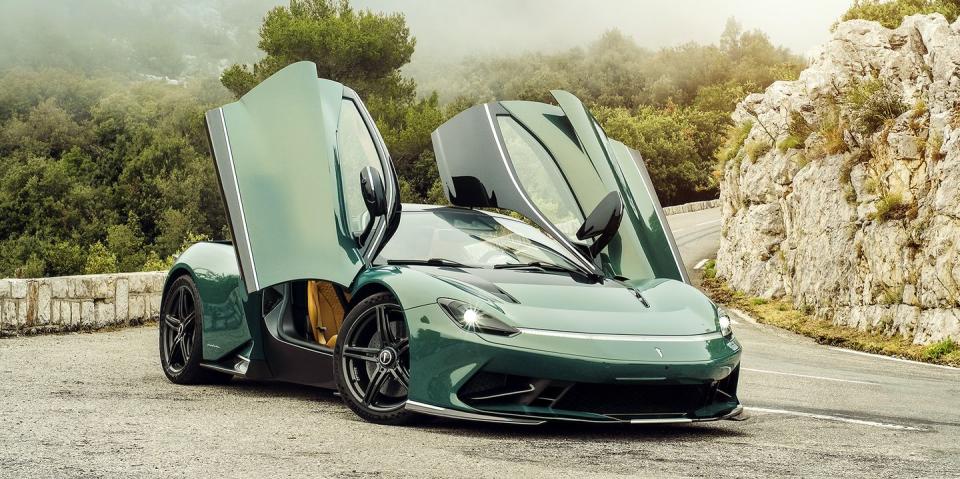
Pininfarina announced production has begun on its Battista hypercar.
The Battista is based on the Rimac Nevera and has a $1.99 million price tag and 217-mph top speed.
Other supercar collaborations will surely follow this one, from Rimac/VW partners such as Audi, Bugatti, Lamborghini, Porsche, and even Hyundai.
Yesterday Rimac announced that its Nevera all-electric hypercar had officially entered production. Today, Italian brand Pininfarina has announced its Nevera-based Battista will start rolling out factory doors. Which leads to the question: How many variants of the Rimac Nevera can they make?
One year ago Rimac announced a somewhat complex ownership deal that included a number of carmakers.
“The Rimac Group itself is owned by Porsche (24%), Hyundai (12%), founder Mate Rimac (37%), and other investors that own the remaining 27%,” we wrote last year in a vain attempt to sort out the deal. “The Rimac Group is divided into Rimac Technology, which is owned 100% by the Rimac Group, and the new Bugatti Rimac. Of Bugatti Rimac, the Rimac Group owns 55% while Porsche owns 45%.”
Got that?
But then recall that Porsche and Bugatti are owned by Volkswagen, which also owns Audi and Lamborghini and you see that the Rimac Nevera could easily be repackaged into a number of very expensive, incredibly quick hypercars. As of last year’s deal, Hyundai (with its 12% stake in Rimac Group) was reportedly working on an all-electric N hypercar.
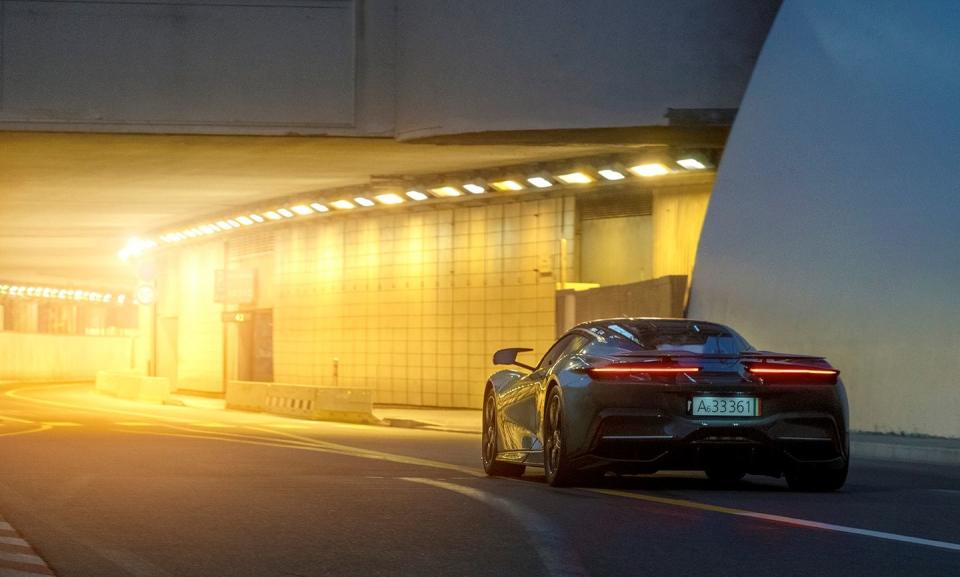
So who knows what’s coming? Right now all we know for sure is that Rimac is making Neveras in Croatia, and Pininfarina has just started making Nevera-based Battistas in Cambiano, Italy.
How much Rimac Nevera is in each Pininfarina Battista?
“The Battista’s rolling chassis, comprising electric powertrain, T-shaped battery, carbon-fiber monocoque, and all electrical systems, enters the first zone for evaluation against Automobili Pininfarina’s strict quality standards,” Pininfarina told us. “Its status is recorded here. This is the first of many electronically managed gates Battista must pass through as it makes its way through Cambiano.”
So Pininfarina gets most of what it takes to make a hypercar directly from Croatia. From there it sets to work creating “the world’s first pure-electric hyper GT—a pioneering proposition for clients and collectors who demand the highest level of luxury, performance and exhilaration.”
Note the term GT, for gran turismo, a category usually referring to a more comfortable cruiser that can also accelerate like a bolt of lightning.
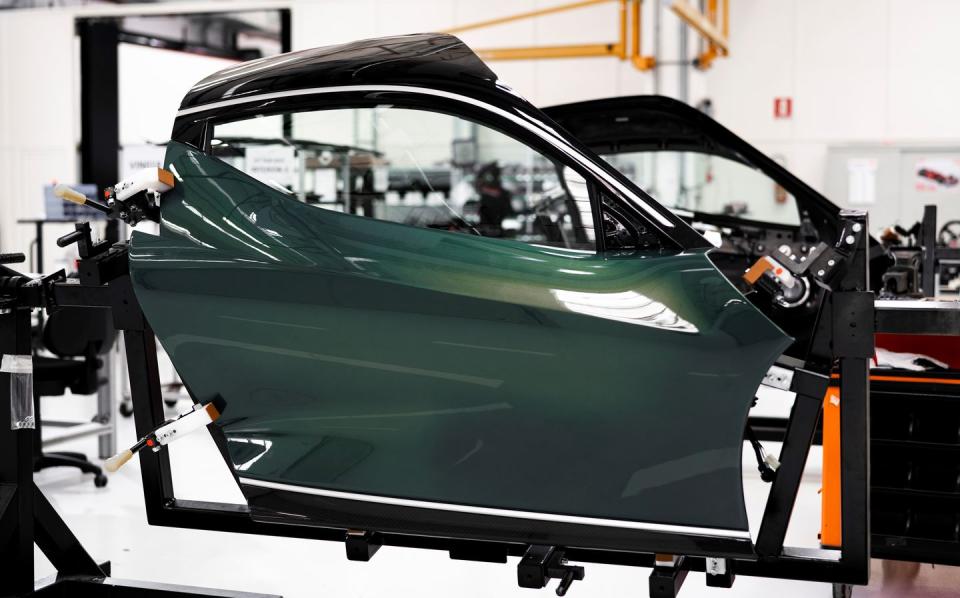
“Not only is this the most powerful road-legal Italian car ever built, but it delivers an entirely new take on sustainable automotive luxury, capable of providing both extreme performance and cossetting refinement,” said Per Svantesson, CEO of Automobili Pininfarina. “It’s a true GT car that looks to the future of sustainability, bolstered by the very latest in-car technologies and virtually limitless scope for personalization, outside and in.”
The Battista will have 1900 hp, 1726 lb-ft of torque, a 0-62 mph time of “under 2.0 seconds,” and 300 miles of US EPA range. Let's not forget the $1.99 million price tag and 217-mph top speed. Four electric motors draw power from a 120-kWh battery. Each motor drives one wheel and can be independently controlled via torque vectoring and electronic control to get the most out of all that power. Drivers can choose from five modes the names of which maybe don’t translate all that well: Calm, Pure, Energetic, Furious, and Character.
"We use energy-neutral torque vectoring on Battista," said Georgios Syropoulos, Pininfarina's chassis dynamics manager. "We recuperate and shift as much electrical energy as possible, instead of using the mechanical brakes that convert the energy to heat, which in turn heats the braking system, too. This active energy shifting takes place directly via the four motors and is much faster and more efficient than a classic brake intervention. With the five dynamic modes, drivers are offered a variety of driving experiences, from an ultra-precise racing setup with maximum thrills and engaging dynamic drive, to a setup geared toward the full GT experience of comfort, relaxation, and ensuring every drive is pleasurable.”
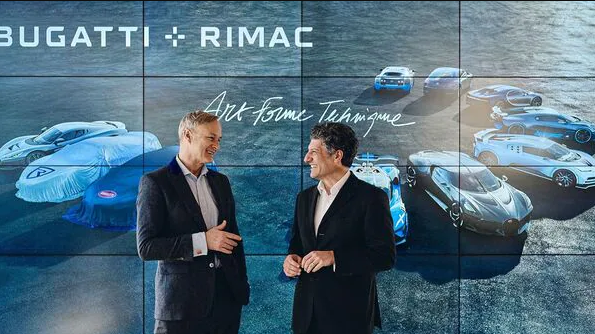
The next likely Rimac Nevera variant after the Pininfarina Battista might be from Bugatti, a company that has already pledged an all-EV future. While announcing a new Bugatti Rimac Design and Engineering Hub in Berlin, the company flashed a photo of existing Bugatti and Rimac cars. In the lineup are two covered cars, one with a big R for Rimac and the other sporting the Bugatti logo.
Porsche CEO Oliver Blume has said to expect an all-electric hypercar in the future but not before 2025.
“The battery will be the cylinder of tomorrow, so we still have to investigate high-power, high-density cells,” Blume told reporters after the company’s annual general meeting. “We will invest in these cells, and when we have the right cell for a high-power car, then will come the point, but I don’t think about this car before the second half of the decade.”
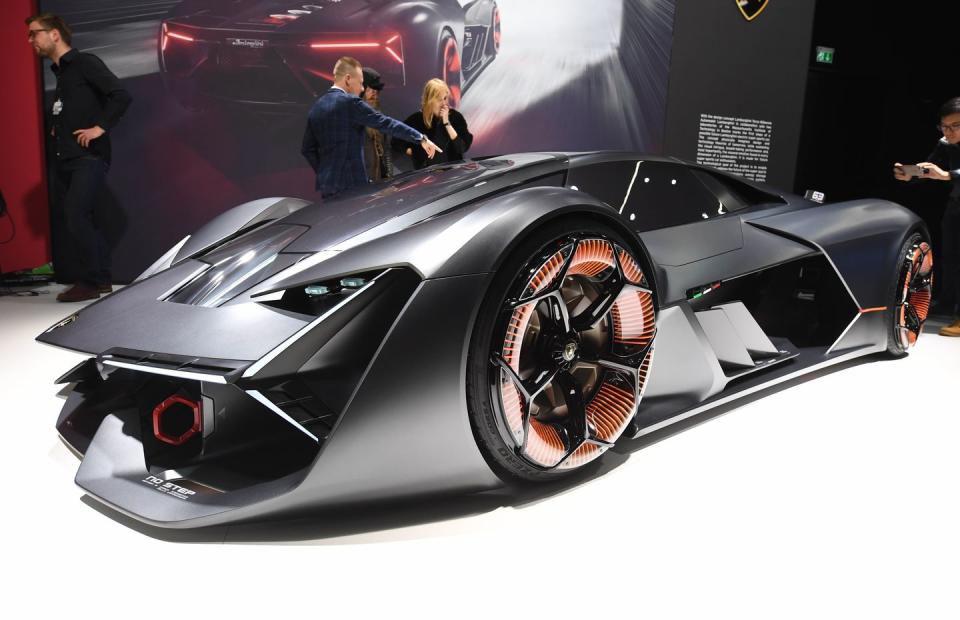
Lamborghini introduced the all-electric Terzo Millennio in 2019, but it uses high-capacity supercapacitors instead of batteries. Lamborghini's Asterion was a three-motor hybrid, and the Sián FKP 37 was another hybrid with an electric motor mounted next to the gearbox. But Lambo has said it will build an all-electric supercar before 2030. The Italian brand could also conceivably make a four-door production version of the 2008 Estoque concept using the current Porsche Taycan all-electric platform, but that wouldn’t be a hypercar based on a Rimac. Regardless, Lamborghini makes nothing but supercars (and a couple SUVs), so a Rimac in its future would make sense, and CEO Stephan Winkelmann has said to expect an all-electric hypercar by 2028.
And what about Audi? The Ingolstadt carmaker has electric e-trons on the market now and released three electric concepts within the last year: the Skysphere, Grandsphere, and Urbansphere. None would qualify as hypercars. Speculation five years ago about an Audi electric hypercar has gone nowhere. A more likely scenario would be a version of a Lamborghini/Porsche supercar akin to the Audi R8, sharing a platform with Porsche and Lamborghini, or the e-tron GT four-door which shares mechanicals with the Porsche Taycan.
Confused yet? We haven’t even discussed what Hyundai’s N hypercar could be. The South Korean automaker has said it is working on a global modular electric platform that could underpin an N hypercar, but we haven’t heard much more about that. Hyundai is still in on the big Rimac ownership deal and was quick to dismiss a report that it had pulled out of it, calling the report “fake news.” So there’s hope in Korea.
All in all, it’s a wonderful time to shop for an electric hypercar, and will get even better in the near future.
Do you think a long line of all-electric hypercars will help grow the market for mainstream EVs? How many electric hypercars does the world need? Please comment below.

 Yahoo Autos
Yahoo Autos 